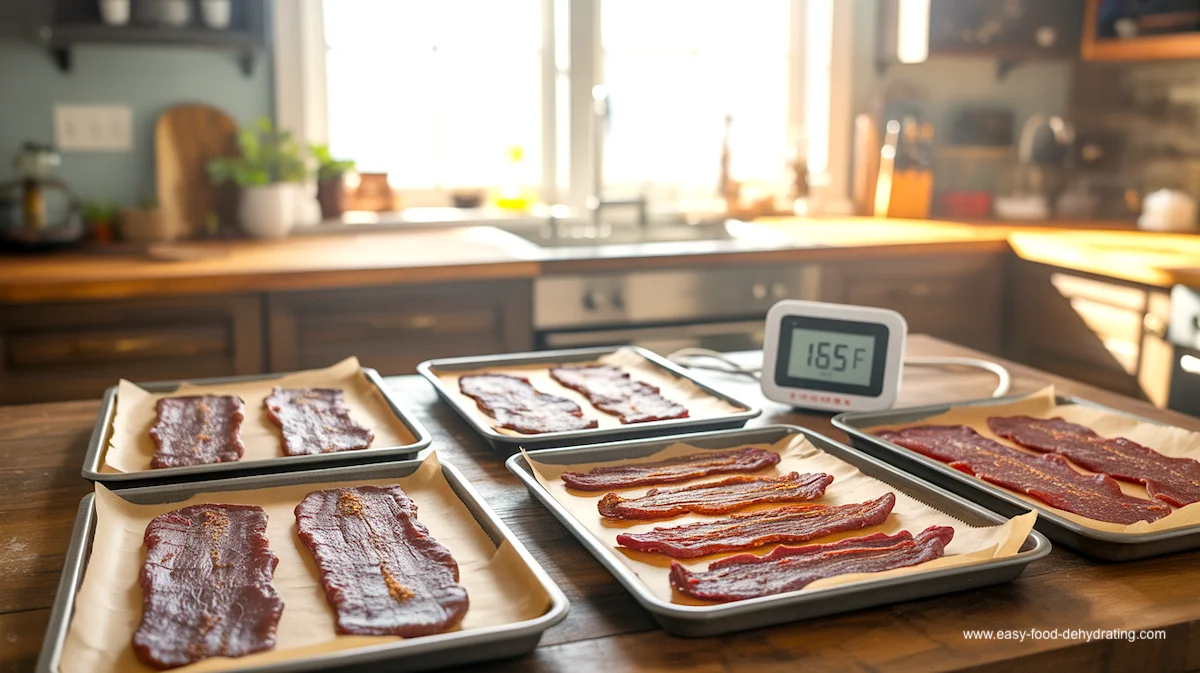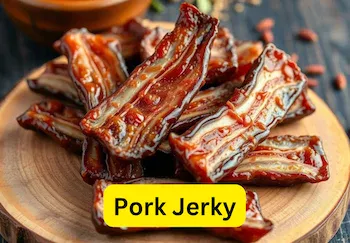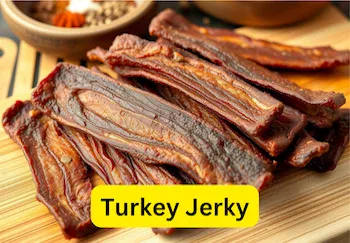What We Mean by “Dehydrate”
Here at Easy Food Dehydrating, “dehydrate” always means using an electric food dehydrator — the easy, reliable way to dry food at home.
- Home
- Jerky Troubleshooting: Fix Drying & Storage Issues
Jerky Troubleshooting:
How to Spot & Fix Common Problems

Making jerky at home is rewarding, but it can also be frustrating when things go wrong. From moldy spots to uneven textures, small mistakes during drying can ruin a whole batch - and waste expensive meat. That’s why this troubleshooting guide focuses on the most common jerky problems and how to fix them safely.
✅ Quick Answer: Why does jerky go wrong in the dehydrator?
Jerky failures usually stem from uneven meat slices, incorrect drying temperatures, or poor airflow. Watch for mold, tackiness, or strong odors—these are red flags. Use a thermometer, rotate trays, and store only fully dried strips to keep your jerky safe and shelf-stable.
Whether your jerky is too soft, too dry, or just doesn’t look right, the solutions here will help you spot issues early, adjust your process, and keep every batch safe and delicious.

Temperature inconsistency: Regardless of the manufacturers claims of "no need to rotate trays," I've always rotated trays every few hours and paid special attention to pieces around the edges where airflow can dry foods faster (or slower, depending on your dehydrator model and the fan's location).
Taking these extra steps might seem fussy, but they're crucial for food safety when working with meat.
Warning Signs Your Jerky Has Gone Bad (and How to Tell Fast)
Watch out for these warning signs when making jerky:
- White, fuzzy spots appearing during drying (stop immediately - this is mold)
- Meat feeling "tacky" or overly moist after cooling
- Strong, unusual odors during or after drying
- Dark spots that weren't part of your marinade
- Uneven coloring that suggests incomplete drying
Could Your Dehydrator Be Contaminated? Watch for These Clues
Signs your dehydrator might be carrying over residue:
- Unexpected flavors in dried fruits or vegetables
- Oily residue on trays even after washing
- Lingering meat odors in subsequent batches
- Discoloration on dehydrator trays
- Marinade buildup in corners or crevices
Read my page on Cross-Contamination here.
Jerky Temperature Mistakes: Why They Happen & How to Fix Them
Common jerky temperature issues and fixes:
- If edges are too dry but center isn't done, your slices aren't a uniform thickness
- When jerky feels "cooked" rather than dried, temperature was too high
- If drying takes much longer than expected, check your dehydrator's heating element (put in a thermometer and see what the temperature reading is).
- Jerky should reach 165°F initially for safety, then dry at 145°F
💡 Tip: Outside the U.S.? Most dehydrating temps here are listed in Fahrenheit — use our quick converter to see the Celsius equivalent for your machine.
Moist Jerky Problems: Causes and Simple Fixes
Solving common moisture problems:
- Condensation on lid means pieces are too close together
- Soggy spots indicate poor air circulation
- If jerky bends without breaking, it needs more drying time
- Store only completely dried pieces - even one moist piece can spoil a batch
Jerky can be one of the most rewarding dehydrating projects when done right—but it’s also one of the riskiest if safety steps are skipped. By keeping an eye on temperature, slice thickness, and airflow, you’ll avoid wasted batches and protect your family from foodborne illness. If you’ve had a jerky fail, don’t be discouraged—use these troubleshooting tips to get it right next time and enjoy flavorful, long-lasting homemade jerky with confidence.
👉 Don’t miss my Cross-Contamination Safety Guide for extra peace of mind.
Jerky Safety & Troubleshooting FAQs
Why does my jerky sometimes smell sour or off?
Why does my jerky sometimes smell sour or off?
That’s usually bacterial growth from either under-drying or storing moist pieces. Discard the batch—it isn’t safe to eat.
Why is my jerky crumbly instead of chewy?
Why is my jerky crumbly instead of chewy?
Over-drying or too high a temperature can make jerky brittle. Next time, lower the heat to 145°F after reaching 165°F, and monitor dryness closely.
Can I dehydrate fruit in the same machine after jerky?
Can I dehydrate fruit in the same machine after jerky?
Yes, but wash trays thoroughly. Residue and odors can linger - see my Cross-Contamination Guide.
How do I fix jerky that feels greasy?
How do I fix jerky that feels greasy?
Fatty cuts of meat release oil during drying. Trim fat before slicing, blot strips during dehydrating, and store finished jerky with paper towels to absorb residue.
Can I re-dry jerky if I stored it too soon?
Can I re-dry jerky if I stored it too soon?
Yes, but only if it hasn’t spoiled. If it shows no mold or odors, return strips to the dehydrator until they bend and crack properly.
What’s the safest way to store jerky long-term?
What’s the safest way to store jerky long-term?
Use vacuum-sealed bags with oxygen absorbers, then freeze for up to 12 months. Room-temp storage lasts 1–2 months at most.
Before you dive into making a new batch, keep these FAQs in mind - they’ll save you time, meat, and frustration. And once you feel confident troubleshooting, why not put those skills to the test with some tasty jerky recipes?
Tasty Jerky Recipes to Try Once You’ve Mastered the Basics
Now that you’ve learned how to troubleshoot jerky problems, it’s time to put your skills to work.
These tried-and-true recipes let you test different meats and marinades while practicing safe dehydrating techniques - so you get bold flavors, chewy textures, and confidence in every batch.
Jerky can sometimes be tricky, but with the right tips you’ll turn out safe, tasty snacks every time.
And before you go, don’t forget to grab your free 5 Dried Food Recipes You’ll Actually Love PDF (below). From hearty carrot and split pea soups to spicy beef jerky and even banana cinnamon rolls, these recipes make the most of your dehydrated foods and keep your pantry full of flavor.
Get 5 Dried Food Recipes You'll Actually Love
Here's where you can get your copy of our all new
5 Dried Food Recipes (That Actually Taste Great)
They're my all-time favorite easy dried food meals!
Get it here right now.
For Free!
Before You Go...
If you enjoyed this page, tap the ❤️ in the lower right-hand corner.
It saves this page to your Grow bookmarks so you can find it again later.
You’ll also see quick share buttons to copy the link, post to Facebook,
or save it straight to Pinterest.



















